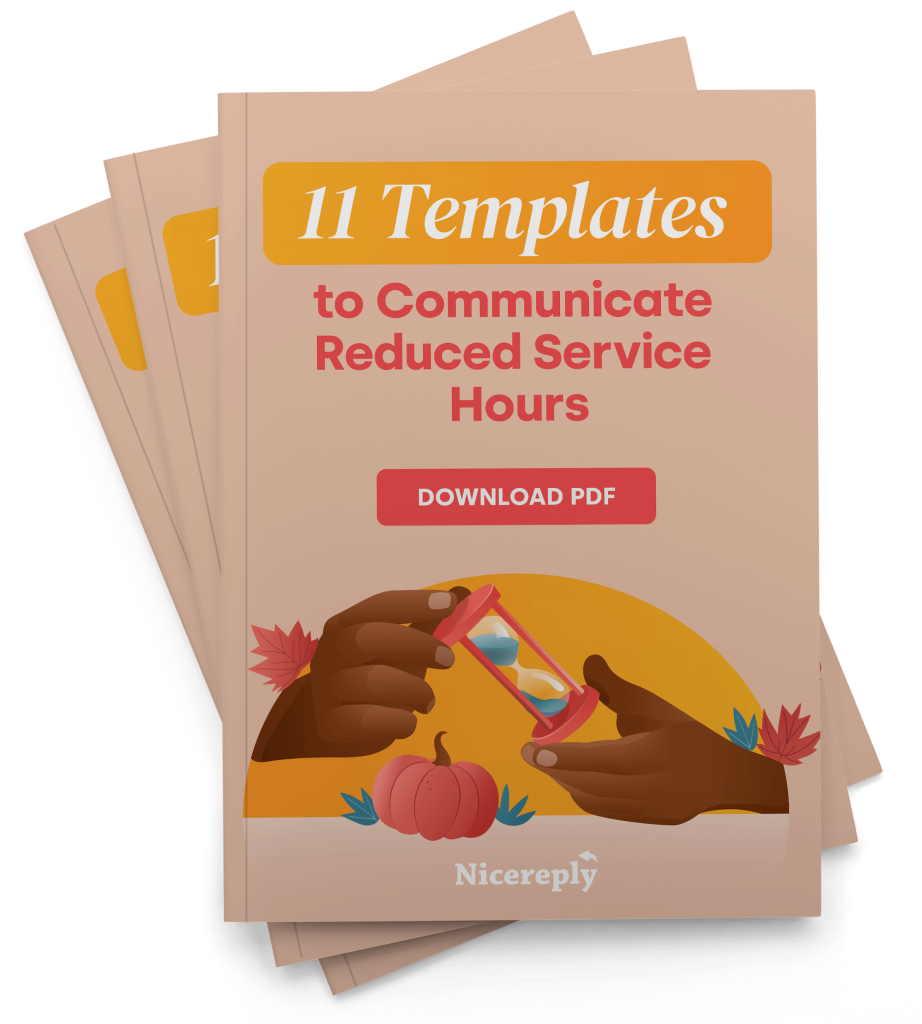A seasonal rush is about to begin. Plan your seasonal staffing well with the advice of our support experts.
Seasonal hiring is a common practice in many industries. Whether it is for a special holiday, or for a time of year, many businesses experience volume fluctuations in their customer care needs. Staffing for these fluctuations is a difficult task. There are many considerations and departments involved in ensuring your customers continue to receive the service levels they expect. From forecasting to product changes to training and tooling, seasonality combines all aspects of workforce management and beyond.
Matt Dale, Founder of Moxie CX and former VP of Support at Illuminate Education, has dealt with some of the most extreme seasonality a team could face: 50% of all yearly volume comes in 2 months of the year! In our interview, he highlights the areas you should consider as part of planning your seasonality.
Start your day
with great
quality
content
Matt, Let’s start with breaking down just how seasonal Illuminate was and some of the main challenges you faced.
Matt: The business focused on software for K-12 schools. So our seasonality, which was extreme to say the least, found 50% of all annual volume coming in September and October as classes ramp up. It is an extreme swing. July has basically no volume, and August starts the trend, but by mid-September, it is all hands on deck. This type of swing is common in e-commerce, Black Friday through Christmas, and the tax industry in early spring.
For us, a lot of planning happens in the preceding October and November, almost a year in advance, to predict the following September. This includes process, staffing, volume expectations, budgets for overtime, and of course training for product changes.
A year in advance?! There must be a lot of unknowns to navigate. How do you prepare with those constraints?
Matt: This planning often involves guessing as we don’t have the sales pipeline clearly outlined. The entire off-season is used to prepare for the busy season. We look at peak volumes and set a staffing target about 15% less than that (Staffing to 100% might be hard to justify to finance), and we focus on overtime as a planned, budgeted spend for peak season. Account churn and response times need to be considered as part of these numbers too. Combining these factors helps us to define the levers of the service that can be pulled and the impacts of those.
For example, where is the tradeoff between customized customer experience and things like bulk responses? Trading off some personalization for response time might be a good idea. However, you have to be cognizant of the issues that you have and how you might be able to bucket or slice and dice by customer segment. For example, high ARR customers. Plan in advance what tradeoffs you are willing to make. We don’t want to have different processes, we want the same processes that scale and have thresholds that dictate when we use them.
In addition, we use the off-season to optimize. We look at where self-service options may be possible and assess the main ticket drivers from previous years. Because we have multiple products, if we see a trend where the main driver is easier on one product, we can cross-train those agents to handle other types of issues on other product lines.
All of this to say is every year informs the next, and we refine over the lengthy off-season to make sure we are fully prepared for the next.
You mentioned staffing levels and overtime as key planning considerations. How do you structure a team knowing the drastic changes in volume?
Matt: It is important as a leader to know what type of seasonality you are dealing with. Is it short-term? 4 weeks? 4 months? And what sort of effort is needed to ramp agents up? If we get 1000 tickets during this time, but they are straightforward, then we can potentially bring in temp workers for a very focused support service. If your onboarding is 1 week it is easy to do this. But if onboarding is much longer, temp hiring may not be feasible.
Working with outsourcing companies or temp agencies is a great way to solve this issue. For example, through a BPO, we hire a team that can handle chat full-time, even if they may not be as productive in the off season, but also the cost is typically reduced and they can remain constantly trained.
We have to plan a year in advance for staffing. We hire a couple cohorts, one earlier to train them up based on projections and then one closer to the seasonality to adjust for new information or handle attrition. Something we tried this year, was we pre-hired team members, and then if people left we were okay. Understanding why people leave is key to being prepared. This can make a difference in your team’s ability to succeed and not burn out.
You called out chat, but I imagine these considerations are harder for different channels. Any thoughts on how to manage this with other channels?
Matt: We get tickets via email/web, chat, and phone calls. Phone calls are harder to staff for when volume scales given their real-time nature. The phone channel works well for more detailed tickets that take 15-20 mins to handle and therefore the wait times can be longer than chat, but the complexity often necessitates it.
Our chat teams are more generalist. Focus on immediate response to people who cannot wait for a day or two turnaround time and we have email channels for those asynchronous communications that have an acceptable higher response time. Across these, we use Forethought to bring in AI components that can be automated before the agents look at it.
And finally, another idea is self-service. We make sure that it is robust and usable and constantly evolving.
Inevitably you miss something. What happens when those curveballs come at you?
Matt: If curveballs are thrown in the peak season, you might have to just let it run course. If you don’t have a plan, it’s difficult or impossible to do it in the heat of the moment. Planning in the offseason is critical. I like to ask: “What are the insurance policies that you need to take out to ensure you aren’t caught flat-footed?”
Last year things went very sideways due to a bad release, so this year we made a new plan called the “What-happens-when-things-go-very-sideways-plan.” This happened in the product team, so we didn’t see it coming. To solve this, we listed people from other teams that could help out with tickets or as subject matter experts in case of these exceptions, and we set thresholds when this became, “support tickets are more important than what you are doing” level criticality and bring people from other teams into the queue. Having others on standby and knowing the thresholds to bring them in was a good insurance policy for this type of catastrophic issue.
If you assess risk based on impact and likelihood, you can catch many curveballs, but not all.
How does this expand in the future? What can you do to constantly re-enforce the structures you have already built?
Matt: Certainly, improvements in technology will allow us to do a better job in the future. This could be in automation or product enhancements. The company has to evolve in their stage of growth too, not just the support team. In an early startup environment, you are likely doing things that don’t scale well because you want to keep clients happy to maintain that revenue, but a mature company may not be as concerned there.
As you grow, you need to look at the types of tickets, is it training/knowledge related? Or is it a product issue that needs to evolve? What is causing the volume and what can we reduce and how can we reduce it? Does it need human beings or something else?
Another thing that has to evolve is building an understanding of what is okay and what is not. What is the company strategy for support? Example: Are we in a cost-cutting mode and need to run lean? Or is support a differentiator and we want to use that as a unique selling proposition to our customers? This can change as a company matures and knowing the current company strategy will help you to create new and improved services to offer to create positive Customer Experiences.







